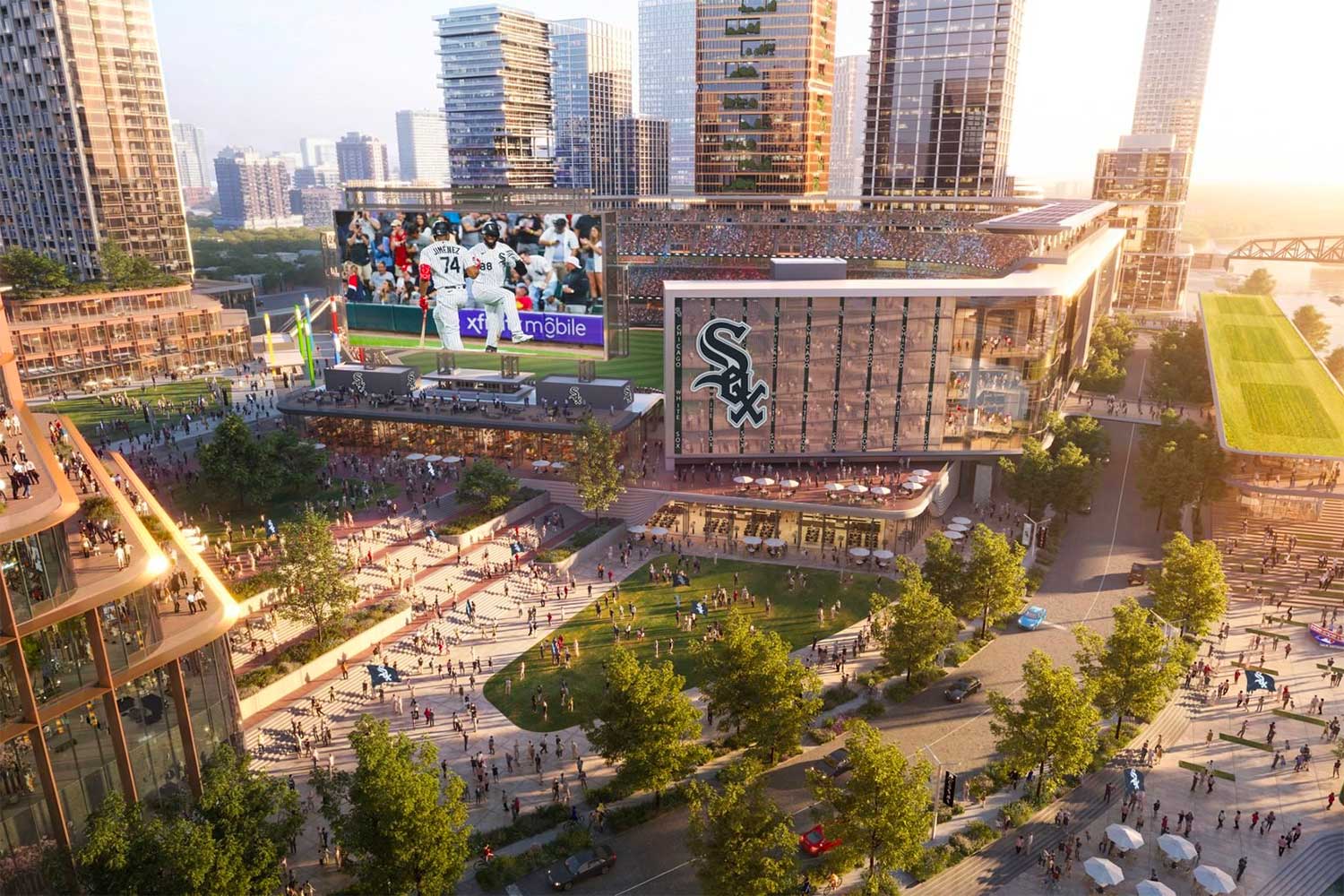The White Sox have played ball in Chicago’s Bridgeport neighborhood for more than a century. Now, the team could be on the verge of a major transformation. Developers recently released renderings of a potential new home for the team—a shiny new stadium surrounded by a ballpark village in the heart of the city’s South Loop neighborhood. Notably absent from the new stadium plans? Parking spaces. With several rail and bus lines and even a water taxi stop nearby, fans will be able to access games without the need for cars—or so one hopes.
Want more Earth-saving tips?
Subscribe to the one5c newsletter here
The stadium won’t be the first major arena without parking in the U.S., but it will be one of the few with good access to public transportation. And it is part of a larger trend toward building stadiums within cities instead of pushing them to the outskirts. In fact, just a few days after developers released their renderings, the Kansas City Royals rolled out plans for a central site with no additional parking for their next home.
Why we’re excited
Parking lots cover about 10% of the surface area in U.S. cities and cause a host of negative environmental effects. What’s worse: Those surrounding arenas and stadiums tend to sit unused for large chunks of the year. The sprawling cement often overtakes plant and animal habitats, creates stormwater runoff that pollutes nearby bodies of water, and contributes to the urban heat island effect. They also contribute to car culture and, in the case of stadiums, disincentivize fans from using public transit. That’s why stadium developers focused on lowering the footprint of venues are increasingly nudging spectators toward trains, subways, and buses—along with ride shares and bicycles.
In Chicago, surface transit is the third-largest contributor to emissions, and passenger vehicles make up 80% of that total. Plans for the White Sox propose the transformation of Guaranteed Rate Field (née Comiskey Park), the team’s current home, into a mixed-use development. The current sea of parking lots surrounding the ballpark would give way to green spaces and amenities.
What happens now?
Other sports franchises across the country—including the St. Louis Cardinals to the Green Bay Packers—have seen success with similar projects that create neighborhoods around their stadiums. Developers predict the new White Sox stadium, in particular, will generate $4 billion in yearly revenue, create more than 5,000 jobs, and draw about 5 million visitors annually.
But the project isn’t without its challenges and criticisms. Funding for the new stadium has yet to be secured, and there are still questions about how much the project could impact traffic, noise pollution, and the nearby Chicago River. Some development experts, including Emily Talen, professor of urbanism at the University of Chicago, are also concerned with who’s holding the purse strings. “Shifting away from parking lots is a huge positive shift,” she says. “But I question why this developer has to be in control of all these things. If it’s developer controlled, it’s not really public space.”

